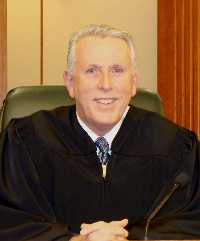In Minnesota, there are nearly 300 district court judges who preside over matters in ten judicial districts. While the Minnesota Rules of Court provide attorneys with significant information applicable to court proceedings, each judge may have his or her individual preferences with respect to motion practice and courtroom conduct.
In an effort to assist attorneys who may be appearing before a judge for the first time, the MSBA Civil Litigation Section Governing Council provided all district court judges with a brief survey. The responses that we received are organized on the right by judicial district and then alphabetically by judge’s name. We hope you find these responses to be helpful in your preparation for district court appearances.
For information about this project or to report an error in any judicial directory listing, contact Kara Haro, MSBA staff liaison to the Civil Litigation Section.
First Judicial District Judges | Courtroom Preferences
Clark, Lawrence
 District Court Judge
District Court Judge
Counties: Goodhue
State Court Bio: View Bio
Contact with chambers:
Motion practice:
- Set forth your practices and procedures for scheduling motion hearings. Through Court Administration
- Identify any type of motion for which you do not require a hearing. Emergency protective or custody order.
- Do you accept telephone calls from attorneys to rule on discovery disputes that occur during depositions? No
- How much time do you allot for motion hearings? As needed. Generally 30 to 60 minutes.
- Set forth your practices and procedures with respect to attending a hearing by telephone or video conference. Contested hearings are to be in person.
- Set forth your practices and procedures with respect to discovery motions. Contested hearings are to be in person.
- Set forth your practices and procedures with respect to stipulations of the parties, including stipulations for protective orders. May be submitted in writing, unless child custody is involved.
- Do you have particular requirements or procedures relating to requests to amend the scheduling order? No, parties may submit stipulations.
- Set forth your practices and procedures with respect to default proceedings. To be in person.
- Set forth your practices and procedures with respect to handling emergency motions. May be by sworn affidavit.
Written submissions:
- Do you want to receive paper courtesy copies of the parties’ written submissions? If you do, set forth the number and preferred format of courtesy copies and identify any document type you do not want to receive. Courtesy copies of proposed findings can be submitted via Word document.
- Set forth your practices and procedures for requests to deviate from the requirements of the General Rules of Practice for the District Courts. N/A
In-court proceedings:
- Identify what technology you use in the courtroom and state whether you prefer a particular electronic format. N/A
- Set forth your practices and procedures with respect to attorney’s use of technology in the courtroom and during trial. As available, as long as not obstructive.
- Set forth your practices and procedures with respect to the submission of additional legal authority or other materials at or after oral argument. As needed or requested.
- Do you permit parties to bifurcate oral argument so different attorneys address different legal issues? I've never seen this, but it may be possible in an exceptionally complex case.
Pretrial procedures:
- Describe your preferred procedures for pretrial settlement conferences, including the timing of such conferences, persons who must attend, whether persons may attend by telephone or video conference, and how you participate in settlement discussions. I prefer attendance by all parties. A party may appear by phone if out of state.
- Set forth your practices and procedures for handling motions in limine. In person, in advance of trial.
Trial:
- What is your schedule for a typical trial day? 9:00 to 4:30. One-hour lunch and 10/15 minute breaks in morning and afternoon.
- Set forth your voir dire procedures. I will do preliminary voir dire only. Attorneys will do further questioning.
- Set forth your practices and procedures with respect to courtroom decorum, including movement in the courtroom, use of a podium, whether attorneys should sit or stand, and how to address witnesses. Attorneys ask to approach witness or bench. Attorneys may sit during motion argument. Attorneys stand whenever addressing the jury. Witnesses are to be addressed by their surname.
- Do you impose time limits with respect to opening statements and closing arguments? Not so far.
- Identify your practices with respect to the use of technology in the courtroom during trial. No restrictions so far.
- Set forth your practices and procedures with respect to marking and using exhibits. Mark exhibits pre-hearing, if possible. Exhibit must be marked before referred to.
- Set forth your practices and procedures for handling objections. Objections should be made after the question is complete. Each party will be heard before a ruling.
- Set forth your practices and procedures with respect to the use of deposition testimony. It's fine for expert testimony or impeachment.
- May attorneys obtain daily transcripts during trial? If so, what procedure should attorneys follow? If agreed to by the court reporter.
- Set forth your practices and procedures with respect to attorney requests to contact jurors at the conclusion of trial. I generally discourage this, but I recognize the rules may allow limited contact. My focus is to protect the privacy and security of the jurors.
Other matters:
- Set forth any other preferences, practices, or procedures attorneys and parties may find helpful. N/A